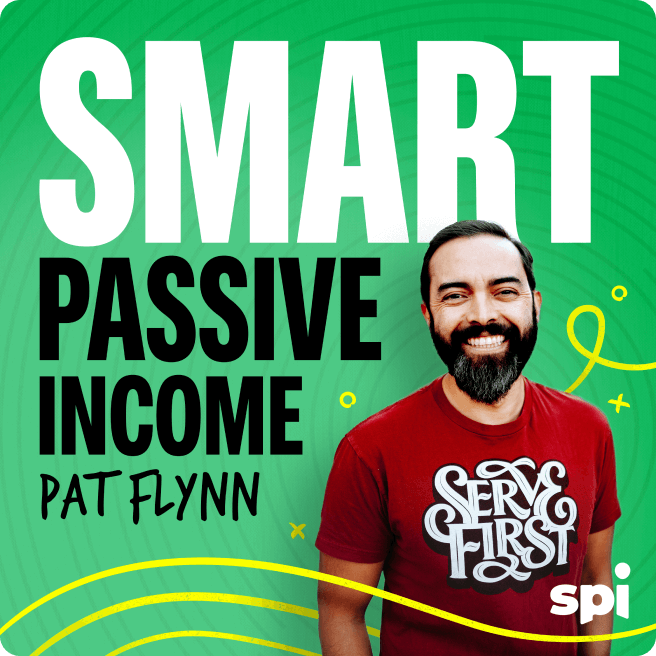I’m so excited for this episode. We are speaking with one of my favorite people in the world: Michael Bungay Stanier. Michael is an author who’s written a bunch of amazing books. He’s also the founder of a training and development company, Box of Crayons, that has taught coaching skills to hundreds of thousands of people.
In fact, one of Michael’s books has been hugely impactful on my own business, and it’s called The Coaching Habit. The Coaching Habit includes a number of questions that you should be asking when you’re coaching people. It’s guided the exact process I use when I coach my students—you can hear it in action when I’m coaching people on AskPat 2.0. Speaking of coaching, Michael also wrote another game-changing book called The Advice Trap, about how we default to offering advice to people before we know the full circumstances, and how to change our behavior to be more helpful to them. Watching out for that trap is crucial, especially for coaches.
But the big focus of today’s conversation is Michael’s new book, How to Begin: Start Doing Something That Matters. And this book is incredible because it gets to the heart of why we do what we do. How do we make sure that what we’re going to do moving forward is actually something that, like Michael says, matters? How do we have the courage to let go when we need to? And how do we navigate the raging waters that sometimes happen when making these decisions?
The book covers similar ground as Will It Fly?, my 2015 book that goes deep into how to validate and test your business ideas.
We talk about how to know whether or not the direction we’re going is one that lights us up. Oftentimes, we’re doing stuff that obviously we’re not very happy about or we wish we had made different decisions.
You’re going to love this conversation because Michael is just a great, genuine person. In addition to his books, he even has a TED talk with over a million views. Oh, and by the way, he’s also a member of SPI Pro. He’s run a workshop there and he’s involved in the conversation. So sit back, relax, and enjoy this episode.
Today’s Guest
Michael Bungay Stanier
Michael Bungay Stanier helps people be a force for change. He’s best known for his book The Coaching Habit, which has sold close to a million copies and has thousands of 5-star reviews online. His new book How To Begin helps people set Worthy Goals and be ambitious for themselves and for the world. He founded Box of Crayons, a learning and development company that helps organizations move from advice-driven to curiosity-led. They’ve trained hundreds of thousands of managers to be more coach-like and their clients range from Microsoft to Gucci. He left Australia about thirty years ago to be a Rhodes Scholar at Oxford University … where his only significant achievement was falling in love with a Canadian … which is why he now lives in Toronto, having spent time in London and Boston. Balancing out these moments of success, he was banned from his high school graduation for “the balloon incident” … was sued by one of his law school professors for defamation … and his first published piece of writing was a Harlequin romance-esque story involving a misdelivered letter … and called The Male Delivery.
You’ll Learn
- Why “worthy goals” are at the heart of what Michael tries to teach people about becoming their best selves
- The two “peak moments” from Michael’s past that showed him what he was capable of
- The three lenses Michael uses to “explore the future”
- How the “spouse-ish” test, the “FOSO” test, and the “Goldilocks” test can help you figure out if your worthy goal is worth pursuing
- How shifting your motivation to serving other people can make you more likely to reach your goal
- Why a moment with his dad made the process of writing and launching Michael’s latest book all worth it (no matter how well the book did)
- Why you need to get clear on the prizes and punishments for taking on—and not taking on—a worthy goal
Resources
Note: Some of the resources below may be affiliate links, meaning I receive a commission (at no extra cost to you) if you use that link to make a purchase.
- SPI 325: How to Be an Amazing Coach with Michael Bungay Stanier
- The Coaching Habit by Michael Bungay Stanier: SPI Book Club Issue 42 | September 2017
- The Coaching Habit by Michael Bungay Stanier [Amazon link]
- Manifesto for a Moral Revolution: Practices to Build a Better World by Jacqueline Novogratz
- Multipliers: How the Best Leaders Make Everyone Smarter by Liz Wiseman
- Will It Fly? by Pat Flynn





